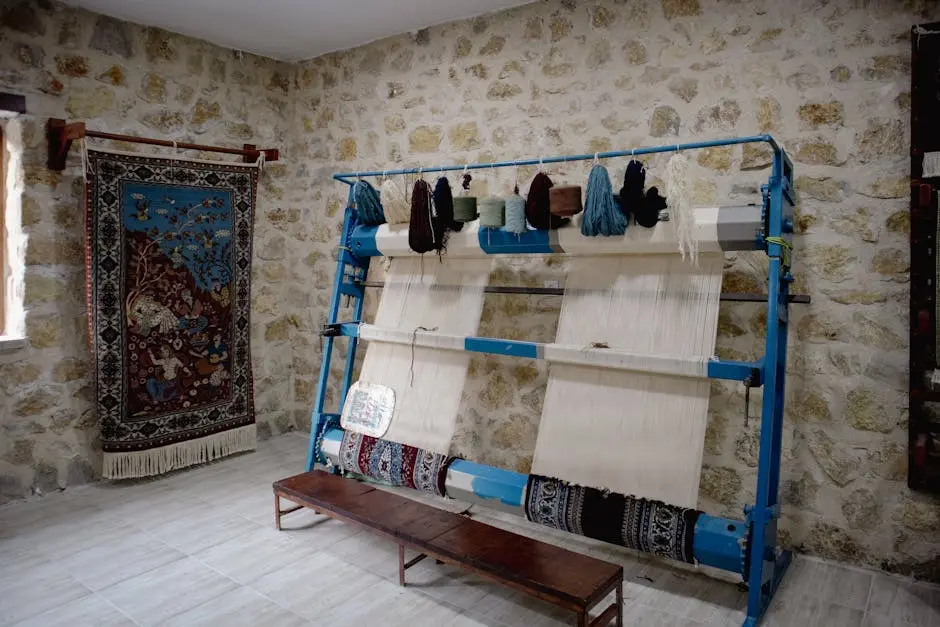Afghan rugs are known for their beauty and intricate designs. In this FAQ blog, we’ll explore the traditional techniques and cultural significance that go into crafting these lovely textiles.
What Makes Afghan Rugs Unique?
Afghan rugs stand out because of their unique aesthetic and cultural depth. Heavily influenced by the artistry of nomadic tribes, these rugs are typically handwoven, ensuring that each piece is distinctive and crafted with care. The designs on Afghan rugs often reflect the history and beliefs of the weavers, incorporating ancient symbols and motifs that are unique to the tribes.
These rugs are known for their vibrant colors, which are created using natural dyes sourced from indigenous plants and minerals. This not only gives Afghan rugs their standout hues but also promises durability and longevity. Such vibrant hints of red, blue, and gold can light up any space, serving as both a functional piece and a work of art.
What differentiates Afghan rugs from other styles is how their designs evolve over time yet maintain their cultural heritage. Patterns such as the Gul and Tree of Life tell stories of the artisans’ lives and surroundings. Each pattern carries symbolic meaning tied to the region, indicating perhaps locations of specific tribes.
For many tribes in Afghanistan, rugs hold a multifaceted role in daily life, extending beyond just decoration to practical uses— they serve as tablecloths, prayer mats, and even tent decorations in nomadic settings. In the contemporary world, however, the shift towards commercialization and urbanization poses threats to these traditional practices. According to Al Jazeera, efforts by collectors and enthusiasts to preserve these legacy arts remain crucial for their survival.
The Materials Used in Afghan Rugs
Traditional Afghan rugs are crafted mainly from wool. This wool is often prized for its durability and ability to absorb deep, rich dyes. Wool is sourced locally, sheared from sheep in the region, which helps maintain the local economy and preserve traditional farming practices.
Natural dyes used in these rugs derive from plants, bark, and even insects, reflecting the weaver’s intimate knowledge of the surrounding environment. This commitment to natural materials not only bolsters the rug’s integrity but also keeps dye processes sustainable and eco-friendly.
Design Patterns and Symbolism
The design elements of Afghan rugs are deeply symbolic and often representative of life, nature, and spirituality. The motifs and symbols passed through generations can acknowledge beliefs or specific myths that resonate with Afghan culture.
Patterns such as the Gul are quite prevalent, decoding elements of war, peace, and nature into geometric shapes and florals. It’s not unusual for these intricate designs to represent protection against evil or symbolize prosperity. Due to their complex meaning and history, each rug becomes a vivid tapestry preserving a family’s identity and tribes’ traditions.
Over time, many weavers have adapted their designs to appeal to international markets while still maintaining traditional core symbols. In many cases, Afghanistan’s rugs now include beautiful depictions attributed to Afghan folklore or narratives of historical events.
The Weaving Process
The weaving process of Afghan rugs is an elaborate art form, taking months or even years to perfect a single piece. Weavers start with setting up a loom, tying the cotton or woolen base, and then applying meticulous skill through knotting and tufting.
Each rug is created with a specific knotting technique variable by region. Most commonly, Afghan rugs use the Persian or asymmetrical knot allowing the weaver to achieve intricate and sweeping designs in the rug’s body.
Afghan rug weaving is not just a means of making a living; it’s also a cultural inheritance imbued with meaning. Within families, these techniques are passed down through generations ensuring that each new rug continues their ancestral stories and sets a new mark on history.
The Role of Afghan Women in Rug Crafting
The art of rug crafting in Afghanistan is deeply intertwined with the lives of Afghan women. It is predominantly women who weave these rugs, often within household settings or community workshops where skills are shared and refined through practice.
Through rug weaving, Afghan women have preserved cultural stories and maintained economic independence for their families despite the challenges posed by modernization. Participating in rug making allows women to contribute financially and partake in keeping Afghan traditions alive.
Preserving Afghan Rug Traditions
The cultural significance of Afghan rugs makes their preservation an imperative task. Amidst challenges like urbanization and global competition, tribes and collectors are working persistently to preserve the authenticity and tradition of these remarkable textiles.
There has been a growing appreciation from western consumers about the artistic craftsmanship involved in tribal rugs. As mentioned by Al Jazeera, despite the challenges faced, newfound interest can lead to rugs being appreciated similarly to masterful paintings, holding both an artistic and cultural value.
This passion from collectors has fortified efforts to maintain the handweaving industry, reinforcing sustaining practices among tribes. By supporting this craft, buyers contribute towards a cultural legacy that needs to thrive—preserving history and ensuring these stories and skills are passed on to future generations.
Conclusion – The Art of Afghan Rugs
To own an Afghan rug is to hold a piece of history and artistry from a rich tradition. These rugs are not just floor coverings; they are cultural storytellers, each weave and pattern holding a unique narrative.
Montclair Rug Gallery – call for appointment – 510-339-2472
Serving the communities of:
Oakland, Montclair, Piedmont, Berkeley, Orinda, Kensington, Emeryville

